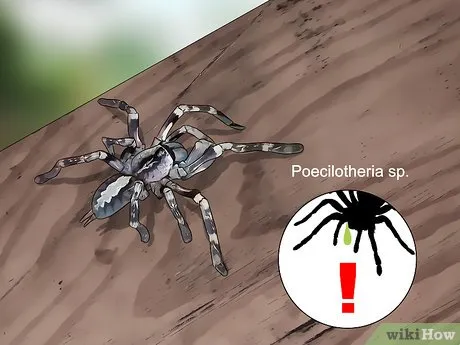Handling a tarantula can be a thrilling experience, but it’s crucial to approach it with caution and knowledge. This guide provides comprehensive information on how to safely handle a tarantula, focusing on respect for the animal and minimizing risks. Whether you are a seasoned enthusiast or a curious beginner, understanding the proper techniques and precautions is essential for both your safety and the tarantula’s well-being. Remember, the goal is to interact with these fascinating creatures responsibly, prioritizing their safety and yours.
Understanding Tarantulas Before Handling
Before attempting to handle a tarantula, it’s important to understand their natural behavior and temperament. Tarantulas, especially those in the wild, are not inherently aggressive but can be defensive. They may bite if they feel threatened or provoked. Also, their primary defense mechanism is to flick urticating hairs, which can cause skin irritation. Therefore, understanding their behavior is the first step towards safe handling. Always observe the tarantula’s behavior and body language; this will tell you a lot about its mood and whether it’s safe to interact with it.
Tarantula Behavior
Tarantulas exhibit a range of behaviors that can indicate their mood. Some tarantulas are more docile than others. They generally prefer to be left alone and will often try to escape or hide rather than confront a perceived threat. Their behavior is influenced by factors such as species, age, and environmental conditions. Understanding these behaviors will help you predict their reactions and handle them accordingly. Some tarantulas may display threat postures, such as raising their front legs or exposing their fangs, while others might flick their hairs. Always give them space and avoid handling when they exhibit any of these behaviors.
Signs of a Stressed Tarantula

Recognizing the signs of a stressed tarantula is crucial. A stressed tarantula might be agitated, pacing frantically, or displaying defensive postures. They may also flick their hairs or hiss. Other signs include a reluctance to move, a hunched posture, or a retreat to their burrow. If you observe any of these signs, it’s best to leave the tarantula alone. Handling a stressed tarantula can increase the risk of bites or other defensive behaviors. Ensuring the tarantula is calm and comfortable is a priority before even considering handling.
Why You Shouldn’t Handle a Wild Tarantula
Handling a wild tarantula is strongly discouraged. Wild tarantulas are often more stressed and less accustomed to human interaction, making them more likely to bite. They may also carry parasites or diseases that could be harmful. Capturing or handling wild tarantulas can disrupt their natural habitat and behavior, which is also a conservation concern. It is important to respect these creatures in their environment. If you find a tarantula in the wild, observe it from a distance and leave it undisturbed; this is the safest and most responsible approach.
Essential Equipment for Handling
Proper equipment is essential for safe tarantula handling, whether you’re dealing with a pet or, very carefully, considering a controlled interaction. This equipment helps protect both you and the tarantula. The correct tools and protective gear ensure that the experience is as safe as possible and that you are prepared for any eventuality. Using the right equipment shows respect for the animal’s well-being.
Protective Gear
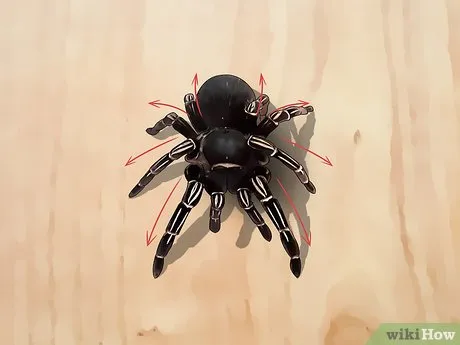
Protective gear should always be worn when handling a tarantula. This includes long sleeves, gloves (ideally thick work gloves that allow dexterity), and eye protection. Some enthusiasts also use a face shield. This equipment provides a barrier against bites and urticating hairs, which can cause skin irritation and allergic reactions. Make sure the gloves fit well to maintain dexterity while handling the tarantula and to prevent it from escaping your grasp. Also, choose clothing made of a material that the urticating hairs will not stick to.
Handling Tools
Aside from protective gear, certain tools can be helpful. A soft brush can gently guide the tarantula without direct contact. A clear container can be used to move the tarantula from one place to another. Long tongs, if used cautiously, can help position the tarantula, but avoid using them to grip the spider. All equipment should be clean and free of any substances that could harm the tarantula. Using the correct handling tools provides extra control and is a good way to minimize any stress to the animal.
Step-by-Step Guide to Handling a Tarantula
Handling a tarantula requires a calm and deliberate approach. Following these steps can increase the chances of a safe and positive experience for both you and the tarantula. Before you start, remember that this is a guideline; a tarantula’s behavior can be unpredictable, so you must always prioritize its well-being and safety.
Preparing Your Environment
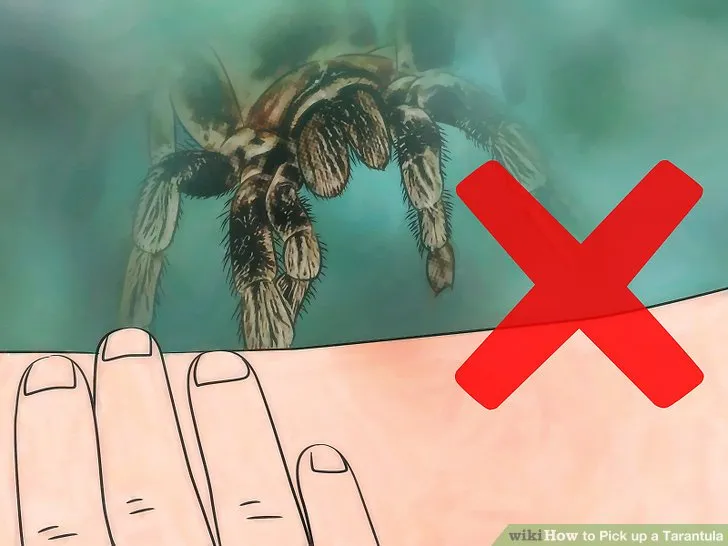
Prepare the environment before handling the tarantula. Ensure a clear and safe space free of obstacles where the tarantula cannot escape. If you are handling the tarantula outside its enclosure, make sure there are no potential hazards, such as sharp objects or narrow spaces. Consider having a container ready for immediate containment if the tarantula becomes agitated or attempts to move in an uncontrolled manner. Keeping a calm and organized environment will help to minimize any stress.
Approach and Gentle Guidance
Approach the tarantula slowly and calmly. Speak in a soft, reassuring tone if you are talking to the spider, and avoid any sudden movements. Use the soft brush to gently guide the tarantula in the desired direction, if needed. Never grab or force the tarantula to move. If the tarantula shows signs of stress, such as raising its front legs, stop immediately. Allow the tarantula to move at its own pace and only attempt to guide it if it is calm and receptive. This respect for the animal helps build trust and confidence.
Safe Lifting Techniques
When lifting a tarantula, support its body gently. Place one hand under the tarantula’s body to provide support and guidance. Avoid pinching or squeezing the tarantula, as this could cause injury or stress. Keep your movements slow and deliberate, and avoid raising the tarantula too far off the ground. If the tarantula shows any signs of distress, immediately lower it back to a safe surface. Handling a tarantula in this way allows you to keep it in sight so you can monitor for signs of stress, and prevent any falls.
Post-Handling Procedures
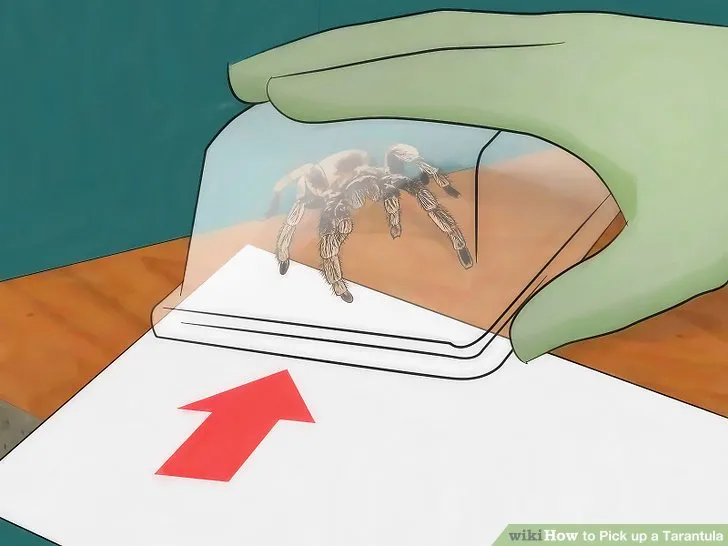
After handling the tarantula, carefully return it to its enclosure or the designated area. Wash your hands thoroughly with soap and water. Monitor the tarantula for any signs of stress or injury. Observe its behavior for a few days to ensure it is eating and behaving normally. Make sure you inspect the tarantula after handling it, as you may not have noticed any damages or issues while you were handling it. Ensuring cleanliness is an essential part of the aftercare.
Common Mistakes to Avoid
Certain mistakes can jeopardize your safety and the tarantula’s well-being. Avoiding these pitfalls is essential for a positive handling experience. Be mindful of these mistakes to create a safer environment for both you and the tarantula.
Ignoring the Tarantula’s Body Language
One of the most common mistakes is ignoring the tarantula’s body language. Failing to recognize signs of stress or aggression can lead to bites or defensive reactions. Always observe the tarantula’s posture, movement, and overall behavior. If the tarantula shows any sign of being agitated, such as raising its front legs, hissing, or flicking hairs, immediately stop the handling attempt. Understanding the communication signals is fundamental for safe interaction. Pay close attention to its needs.
Using Force
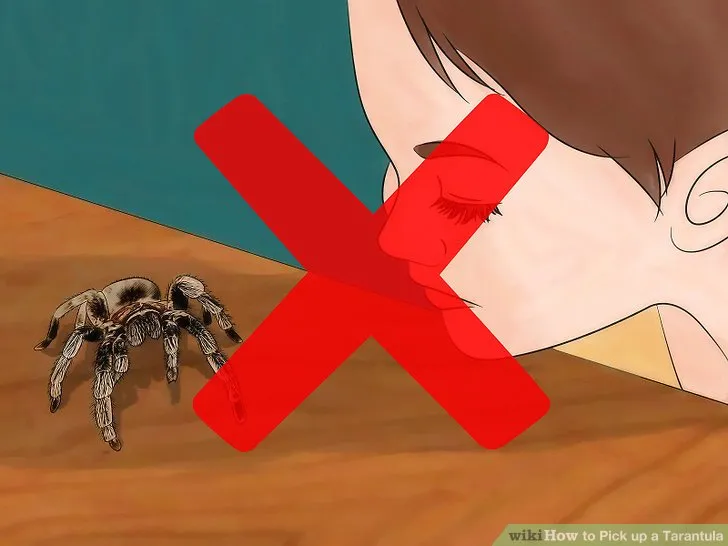
Never use force when handling a tarantula. Forcing the tarantula to move or hold still can lead to injury and stress. Instead, allow the tarantula to move at its own pace. If you want the spider to move, gently guide it with a soft brush or by creating a clear path. Never use force, as that will only scare or injure the tarantula. Patience and gentleness are key to a safe handling experience.
Handling a Molting Tarantula
Avoid handling a tarantula during molting. Molting is a vulnerable time for tarantulas, during which they are unable to defend themselves and are extremely sensitive. Handling a tarantula during this process could cause injury or even death. It’s best to leave the tarantula undisturbed until it has fully completed the molt. Providing a calm, safe environment during molting is essential for the tarantula’s health. Ensure the enclosure has proper humidity to facilitate the molting process.
Conclusion Handle with Care and Respect
Handling a tarantula, when approached with the right knowledge, equipment, and precautions, can be a rewarding experience. However, it’s important to remember that respect and caution are paramount. Always prioritize the tarantula’s safety and well-being. By understanding their behavior, using the right equipment, and avoiding common mistakes, you can create a safe and positive environment. If you are ever unsure, err on the side of caution, and consider observing the tarantula from a distance. Handle with care and appreciate these amazing creatures for what they are.
